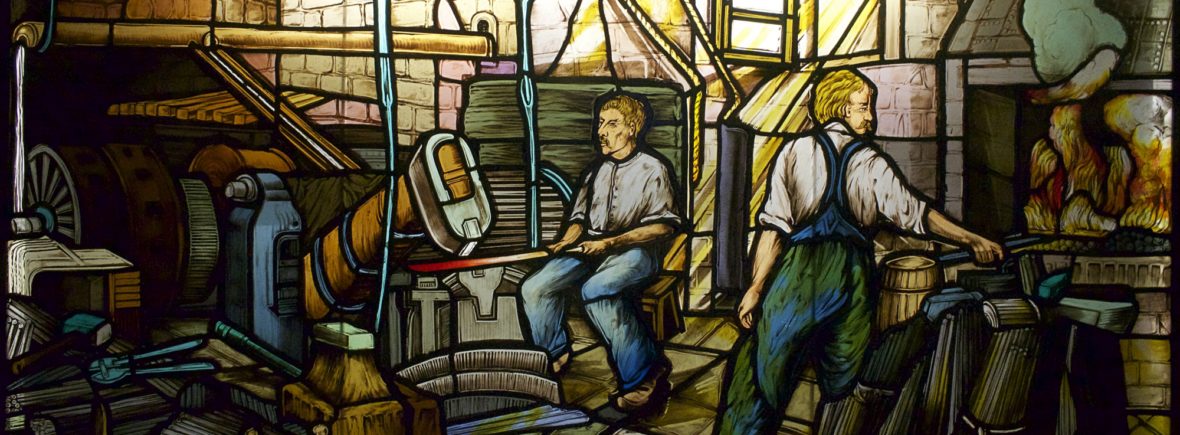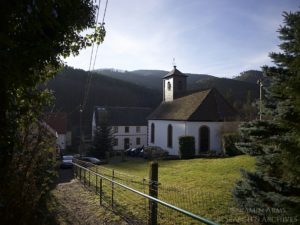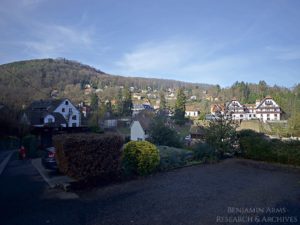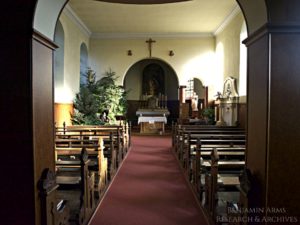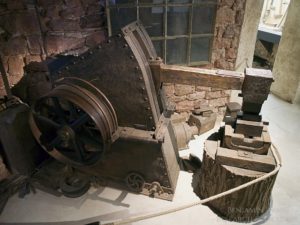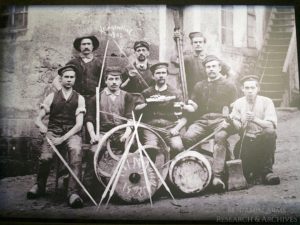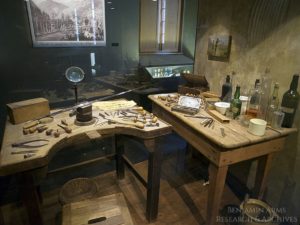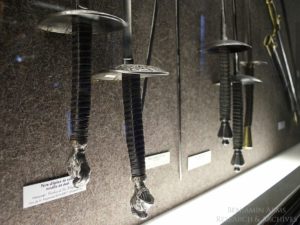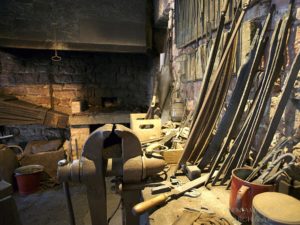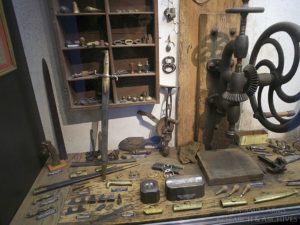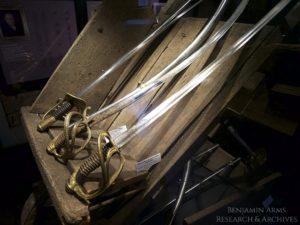Klingenthal – The Valley of Blades
Klingenthal is a small river town in the north-east corner of France near Strasbourg. The city was built by Bauyn d’ Angervillers, former French war secretary, and Henri Anthes was granted the first directorship by King Louis XV on July 15th, 1730. The city sits in a strategic location featuring water power for hydraulic forges and grindstones, as well as local iron ore and wood. Klingenthal was established in part to free the French from their reliance on imported foreign weaponry and operated as a single government company for large scale manufacturing of blades and military arms. The town was the closest competition to Solingen, Germany and anecdotally has been said to have begun with Solingen defectors who named Klingenthal in their native German tongue to mean Valley of the Blades.
- Klingenthal city limits sign
- Small church in Klingenthal, France
- View of the Valley of the Blades
- Main street in Klingenthal France
- L’Eglise Catholique in Klingenthal France
- Henry Anthes’ Mansion
- Reservoir and waterways powering production
Klingenthal swords and blades, and the Coulaux & Cie purchase
Blades produced in Klingenthal were universally marked Klingenthal for the duration of the city’s production with various names added as the managing families changed. The most notable operating family was the Coulaux family, who added Coulaux to the mark when they took over management in 1801. Major government military arms manufacturing ceased in 1838 when the majority of the skilled workforce relocated to the new arms manufacturing facilities at Chatellerault and Saint Etienne, and the Klingenthal facilities, land, gardens and houses were sold at auction to the Coulaux family who continued arms productions into the 20th century. Fencing blades weren’t forged in Klingenthal until 1850 under the Coulaux family, and were mounted in-house and sent to fourbisseurs and cutlers for assembly and retail.
- Stained glass in the Hotel Vosges
- Klingenthal tilt hammer
- Former officers quarters
- Sword grinders in Klingenthal
- Reassembled sword engraving station
- Coulaux & Cie dueling swords
- Forge and tools for blademaking
- Swordmaking tools and dies
- Maison de la Manufacture, Klingenthal
- French military sabres from Klingenthal
Klingenthal swordmaking heritage today
Klingenthal today remains a small town with little growth or change since the forge hammers fell silent on February 1st, 1962. A group called the Association Pour la Sauvegarde du Klingenthal run a fantastic museum (Maison de la Manufacture) dedicated to the many people and products of the city, though the majority of the old facility buildings are in private hands or succumbing to the elements. Signs around the town and it’s neighboring cities direct drivers towards the Ancien Manufacture d’Armes in Klingenthal, and the few who maintain it’s heritage are fervent.
Things to see in Klingenthal, France
Maison de Manufacture: This museum is built on the site of the former Halle de Forgeurs and details the history of the town, it’s people, and it’s products. The highlights are the beautiful edged weapons on the second floor, and the scythe collection on the third. Many fencing weapons and parts are on display.
Placards: Throughout the city on each original building used for forging, grinding, or supporting the workmen are placards detailing their history.
Cemitaire du Klingenthal: The city’s cemetery reminds visitors how small the city has been through it’s history. Charles Louis Coulaux, the most successful of the Coulaux operators, and his wife are burried here.
Maison du Henri Anthes: The largest and most beautiful house in the center of town is the former home of Henri Anthes, the first director of operations at Klingenthal.
L’Eglise Catholique Saint Louis: This small catholic church chimes every fifteen minutes and is nicely ornamented. The stained glass windows bear names of the resident families whom donated them. The church has been around since the first days of the city and one can’t help but imagine the first director Henri Anthes, or the brilliant Charles Louis Coulaux sitting among the pews.
Reservoirs and Waterways: The original waterways still exist in Klingenthal and may be followed up from the Maison de Manufacture in the center of town up the valley to see many canals, locks, and reservoirs used to distribute water to and support the various workshops, though some will disappear beneath the streets. Crowning the water system at the top is Le Grand Resevoir, largest and deepest of them all.
Le Lavoir: Right around the corner from the Maison de Manufacture is the original washing and laundry station of town where all the workers and their family would source their water from.
Quarry: Nearby along an upper road following the river there’s a former quarry site now turned into a climbing wall by the Federation Francaise de la Montagne et de l’Escalade. Though there’s no specific evidence to guarantee this exact quarry was not a source for stone in Klingenthal, the surrounding region was indeed known for supplying the grinding houses.
Lotzelbourg Castle: At the top of the mountain to the south are the ruins of Lotzelbourg castle, built in the 1100s on the foundation of a Roman fortress. Access is denied to the castle grounds, but some great views are awarded during the journey. May only be accessed by foot.
Mont Sainte-Odile: This beautiful monastery houses a hotel, restaurant and some of the best views of the Alsace region. May be accessed by car and should not be missed.
Hotel de Vosges: Inside this hotel in the upstairs dining halls are two gorgeous stained glass windows depicting forging and a city panoramic beautifully ornamented. This hotel is a pleasant stay and is closest to the old forging sites.
